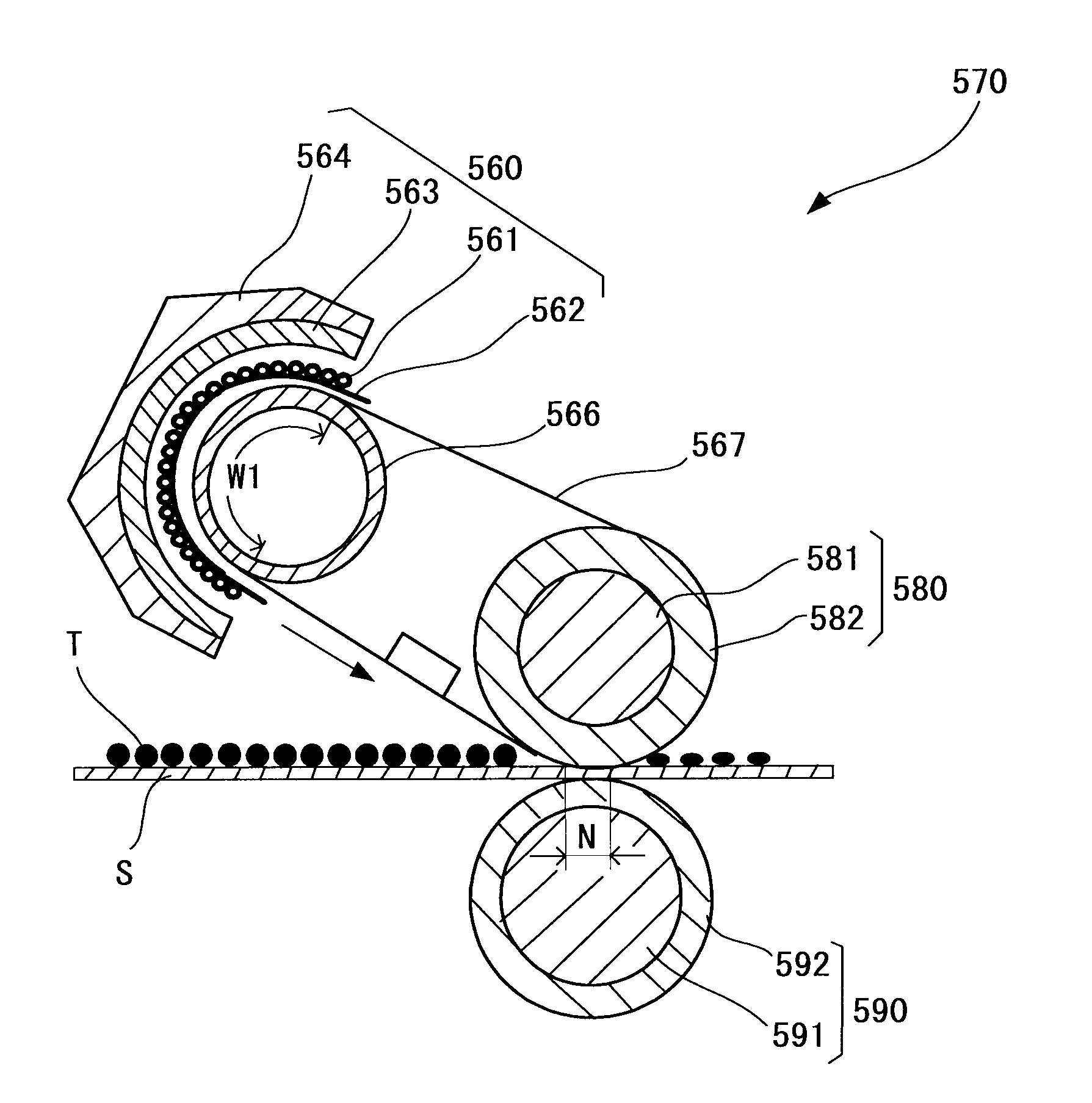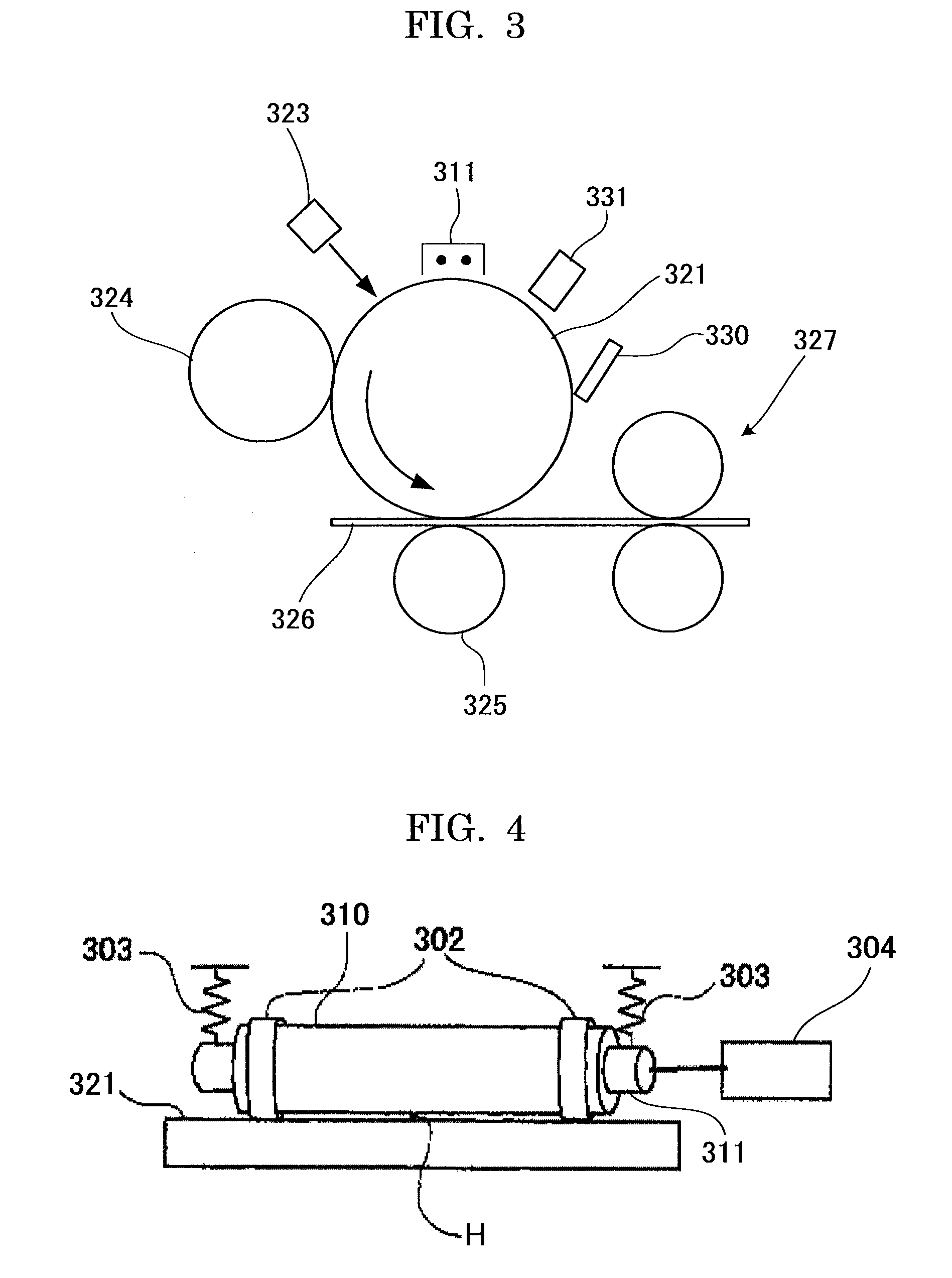Toner and developer, and image forming apparatus, image forming method and process cartridge
- Summary
- Abstract
- Description
- Claims
- Application Information
AI Technical Summary
Benefits of technology
Problems solved by technology
Method used
Image
Examples
synthetic example 1
Purification of Rosin
[0497]1000 g of tall rosin was added into a flask of 2000 ml equipped with a fractionating column, a reflux condenser, and a trap, and was distilled under a reduced pressure of 1 kPa, thereby distillate at 195° C. to 250° C. was mainly collected. Hereinafter, tall rosin to be purified is referred to as unpurified rosin, and rosin produced by way of collecting main distilling components is referred to as purified rosin.
[0498]20 g of rosin was milled for 5 seconds by use of a coffee mill (National MK-61M), and passed through a mesh of opening 1 mm, then the resulting powder was weighed in an amount of 0.5 g into a vial (20 ml) for headspace. Headspace gas was sampled and impurities within unpurified or purified rosin were analyzed by a headspace GC-MS method as follows. The results are shown in Table 1.
Measuring Condition in Headspace GC-MS Method
(A) Headspace Sampler (HP7694, by Agilent Co.)
[0499]Sample temperature: 200° C.
[0500]Loop temperature: 200° C.
[0501]Tra...
synthetic example 2
Synthesis of Polyester Resin
[0521]The alcohol components, terephthalic acid, and esterification catalyst of resin H1 shown in Table 2 were added into a four-necked 5 L flask, equipped with a nitrogen inlet, a water outlet, a stirrer, and a thermocouple, then the mixture was subjected to condensation polymerization at 230° C. for 15 hours under nitrogen atmosphere, followed by reacting at 230° C. for 1 hour under 8.0 kPa. After cooling the reactant to 180° C., a purified rosin was added, then the mixture was allowed to react at 200° C. for 15 hours. After cooling the reactant to 180° C., itaconic acid was added, then the mixture was allowed to react at 200° C. for 8 hours. After cooling the reactant to 180° C., trimellitic anhydride was added, then the mixture was heated to 210° C. over two hours, and allowed to react at 210° C. under 10 kPa till an intended softening temperature was realized thereby to synthesize a polyester resin (resin H1).
synthetic example 3
Synthesis of Polyester Resin
[0522]The alcohol components, terephthalic acid, and esterification catalyst of resin L1 shown in Table 3 were added into a four-necked 5 L flask, equipped with a nitrogen inlet, a water outlet, a stirrer, and a thermocouple, then the mixture was subjected to condensation polymerization at 230° C. for 15 hours under nitrogen atmosphere, followed by reacting at 230° C. for 1 hour under 8.0 kPa. After cooling the reactant to 180° C., a purified rosin was added, then the mixture was allowed to react at 200° C. for 15 hours. After cooling the reactant to 180° C., itaconic acid was added, then the mixture was heated to 210° C. over two hours, and allowed to react at 210° C. under 10 kPa till an intended softening temperature was realized thereby to synthesize a polyester resin (resin L1).
PUM
| Property | Measurement | Unit |
|---|---|---|
| Temperature | aaaaa | aaaaa |
| Temperature | aaaaa | aaaaa |
| Temperature | aaaaa | aaaaa |
Abstract
Description
Claims
Application Information
 Login to View More
Login to View More - R&D
- Intellectual Property
- Life Sciences
- Materials
- Tech Scout
- Unparalleled Data Quality
- Higher Quality Content
- 60% Fewer Hallucinations
Browse by: Latest US Patents, China's latest patents, Technical Efficacy Thesaurus, Application Domain, Technology Topic, Popular Technical Reports.
© 2025 PatSnap. All rights reserved.Legal|Privacy policy|Modern Slavery Act Transparency Statement|Sitemap|About US| Contact US: help@patsnap.com



